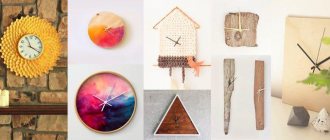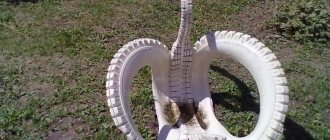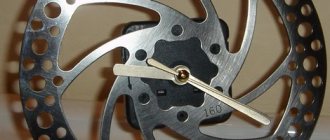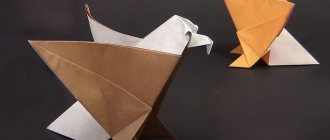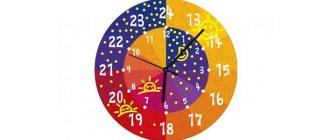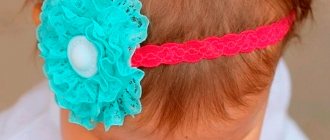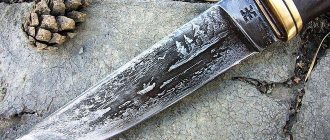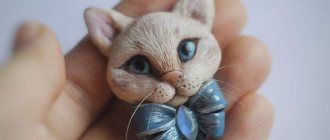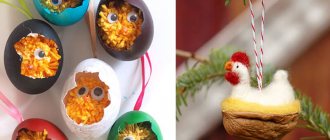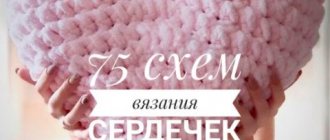DIY vinyl record clock: step-by-step instructions for beginners
Vinyl records with your favorite music make you feel nostalgic, so many people do not decide to part with them after a long time. When they sit on a shelf, they collect dust and take up space. There is not much benefit from this, rather the opposite. If you are not lazy, you can breathe a second life into them. Your work will not be in vain and will please the eye both for you and for everyone who comes to your home. This accessory will add originality to your interior, which is now so valued. If your house is filled with things from the last century, and you can’t bear to throw them away, then you will find this article useful on how you can make a clock quickly and easily from a vinyl record.
Making a watch from a vinyl record is not as difficult as many may think at first glance. For those who cannot immediately understand the entire process of making such watches, a video tutorial will be useful, which you can familiarize yourself with after reading the article.
Features of records as a base material
Records are created from vinyl chloride with some additives. Many useful household items have been created from this material, as it is safe for humans. Vinyl is a flexible and unbreakable material. When heated, it acquires the properties of plasticine. A heated vinyl record can be easily shaped into any shape while observing safety regulations. You need to wear gloves to avoid burning your hands.
This material can also be cut with scissors or a jigsaw. Products of various shapes are cut from it. Because of these qualities, designers love to work with vinyl records.
Let's look at the main methods of making watches from a vinyl record
The simplest option, in which only the mechanism itself is attached to the surface of the plate. It must be glued on the reverse side. The arrows come out to the front side through a hole in the middle. For a more impressive appearance, you can make a drawing. It can be glued or drawn by hand with a brush. But lovers of minimalism will also like the option without drawings.
This method is very similar to the first. The difference is that before attaching the clock mechanism, you need to give your watch a not very complex shape (hare, butterfly, heart, etc.). Remember that when cutting out the shape, do not rush, because... Vinyl can melt from high temperatures.
To cut, you will need a burr with an attachment or, if you don't have one, a hand jigsaw. Before cutting out the dial, you need to draw it with a pencil on the future watch. After finishing the work, start cutting along the contour.
If you prefer to use this option, don’t be upset if it doesn’t work out right away, because... this is quite a complex process. Be patient and try again and again until you get the hang of the tool.
You can apply a design to a vinyl record either yourself or using stencils. This method is very complex and, if you do not have the necessary experience with tools, then hold off on making watches. Instead, you can practice on plywood or other suitable scrap material.
You can use decoupage to decorate your future watches. But if you want it to be noticeable that this is a vinyl record, then you should not use this method. Under the picture it will not be clear what material the product is made of. To achieve the same effect, you can simply take a sheet of plywood or plastic.
Copy Software
Then you need to get the necessary applications for your computer. There are quite a few of them on the market, some specifically designed for recording from vinyl. Channel D's Pure Vinyl (pictured above) is one of the best flexible software packages out there.
For example, it has a built-in RIAA equalizer, so you can connect the player directly to your computer and do without a phono stage. Powerful editing features improve the quality of your recordings. Everything would be fine, but it costs as much as £250 - however, a 15-day trial period is offered.
But for many, this option will be too unaffordable. In this case, we recommend Audacity software - it is free and works quite well. The interface seems complicated at first; learning some editing functions will take time, but after mastering the program you will be able to easily navigate it.
We are studying one of the options for making a clock from a vinyl record using the decoupage technique
To work you need:
Handmade business attracts budding entrepreneurs with a low entry threshold and the opportunity for self-realization. Such projects are not always long-lasting, but if the founder believes in himself and has correctly “found” the niche, then his micro-business has every chance of growing into something more serious. Three years ago, a student from Vladivostok, Karina Kaluga, sold her first watch made from vinyl records through a page on a social network, and now her products are sold in many retail outlets and both Vladivostok residents and guests of the city are happy to buy them.
Karina Kaluga
, 25 years old, entrepreneur from Vladivostok, founder of the
Vinyl Vl
(production of designer watches from old vinyl records). Education: Vladivostok State University of Economics and Service (specialty in environmental design). The cost of starting a business was 5,000 rubles.
Three years ago, student Karina Kaluga worked in the Far Eastern representative office of the Yota company, which once sent her on a business trip to St. Petersburg. There, Karina entered an underground passage and saw a clock made from vinyl records. There were three hundred rubles in my pocket, and the watch cost five hundred. So Karina decided that it was time to do something of her own without large investments - for example, a similar watch.
“I came home with these thoughts. I bought thirty old records from an online flea market, made models, and found a carver. To begin with, we laser-cut three clocks with different details to understand how fused vinyl would behave. All the watches turned out, and I posted them in a group on the social network VKontakte. On the same day, I received orders from friends and acquaintances. I think that the approaching New Year played a big role in this,” says Karina Kaluga.
Bookend
A great idea if you are both a music lover and a bibliophile. The instructions for creating it are similar to the version of the record clock: you will only need to warm up a couple of your vinyl treasures in the oven and bend them a little before they have time to cool.
The records can be selected by theme to match the contents of the books, so you can create vintage decor and organize your library at the same time! For example, classic vinyl will sit well next to works of the Victorian era, and Mr. Jim Morrison will successfully complement the novels of Jack Kerouac.
DIY crafts from vinyl records: tips for home craftsmen
Vinyl records, which were widely used for sound recording in the last century, still survive today. The most valuable specimens can be sold to collectors. Discs that have been released in large quantities can be used to make household items or original handicrafts with your own hands.
A boring white wall will immediately become more attractive if you decorate it with plates with bright stickers. The result will be a unique colorful design.
Painting with acrylic paints will make the composition even more impressive.
From discs of the same size fastened with variegated laces or metal staples, you can make curtains that replace an interior door.
Unusual coasters for hot dishes will surprise your guests and put the older generation in a nostalgic mood.
Round photo frames can be decorated with lace, beads or paper flowers. Even schoolchildren can cope with such work.
The minion mirror frame looks like an exotic flower.
A simple but elegant handbag perfect for stylish teenagers. It’s good if young needlewomen make the product themselves.
Non-standard furniture will fit into a modern interior of any design. The correct geometric shape of vinyl circles and ease of assembly allow you to build a hanger, small table or stool in a few minutes. Such handmade crafts from records will appeal to fans of talented musicians of the past.
A damaged countertop decorated with an unusual mosaic will look like new.
The reflections on the surface of vinyl records will make the light of a table lamp or pendant chandelier brighter.
Vinyl is a material that softens easily when heated. To make the walls of a homemade shelf, bottle rack or kitchen organizer, just hold the plates in boiling water for a few minutes and bend them in accordance with the chosen project.
A small tabletop device can be made from one disk, cut in half.
To obtain more complex designs, the plates are heated in an oven, the temperature of which should not exceed 120 C°, and then they are given the desired shape. To avoid burning your hands while working, you should use protective gloves.
A colorful stand for jewelry can be made vertical or in the form of a shallow dish.
From heated vinyl you can form any containers, for example, an original office organizer.
There is no need to drill a hole at the bottom of a homemade pot for indoor plants - it was provided by the technology for making gramophone records.
Making beautiful carvings on plates is a little more difficult - you need skill and special tools. The design is cut out onto a stencil using a sharp knife, electric jigsaw, milling cutter or wood burning device. Home craftsmen can come up with other ways to create elegant lace products, which, as a rule, serve as frames for homemade watches.
Crafts made using the decoupage technique look very impressive.
To create colorful panels, any decorative elements that match the theme of the image are suitable. “Paintings” for a children’s room can be decorated in a marine style, and a kitchen applique can be decorated with bulk food products, seeds or nuts.
A colorful pot for hanging plants or artificial flowers will make your garden area more elegant. And the feeder will help birds and squirrels survive the cold season.
Young plants surrounded by a simple but visible border will be protected from trampling.
Pliable and flexible vinyl is a convenient material for home creativity. Creating original household items will only require a little imagination and diligence.
Idea No. 2: colored fruit bowl
The vinyl resin from which records are made can not only be cut, but also melted.
This feature is used to create vases, candy bowls, crackers and fruit bowls. Such products painted with acrylics or decorated using the decoupage technique look especially impressive. To make a beautiful colored fruit bowl from an old record, you need to prepare the following:
The first step is to remove the paper sticker from the record. These stickers were attached with very strong glue and are not washed off with ordinary means. Because they are difficult to remove, many craftsmen leave them in place, working directly on top. However, if you want to get a perfectly flat surface without protruding relief, you should try to remove the sticker.
Practice shows that stickers come off normally if you immerse the plate in water overnight and then rub it with sandpaper directly under running water. To begin with, use coarse sandpaper, and then sand the surface with fine-grained sandpaper.
Next, the following operation is performed:
While the surface of the vinyl has not completely cooled down, you can slightly correct the shape if you are not satisfied with something. After the resin has cooled, the resulting vase is decorated with acrylic paints.
When heating a record, it is necessary to remember fire safety measures. Vinyl is very flammable. The painted fruit bowl can additionally be coated with acrylic varnish to give it a glossy shine.
When new is better than old
Vinyl records (LP) are, first of all, the first original pressings. All the magic of the original analog recording, the richness of timbres and “that same sound” is exactly what audiophiles are chasing. But the modern development of technology (and not always digital!) dictates its own rules - careful mastering from studio tapes, the use of SuperVinyl / UHQR formats provide unprecedented sound realism. Often superior to the original! Today in our selection are the best editions on modern vinyl records, which, in our opinion, should be present in every collection!
Bob Dylan "Blood On the Tracks" Hand-Numbered Limited Edition SuperVinyl
Catalog number – MFULP006-45 $124.99
Named one of Rolling Stone's 500 Greatest Albums, Bob Dylan's fifteenth album is a masterpiece. A modern edition to match: the released 45 rpm records were recorded in the Mobile Fidelity UltraDiscOne-Step (UD1S) format. The use of only analog mastering and a one-step printing process (joint development with JVC), the use of carbon fiber mass (NEOTECH and RTI) - all this guarantees both negligible noise levels and hyper-realistic sound. Only a couple of boxes are released per person, the circulation is limited to 9,000 copies.
Dave Brubeck Quartet "Time Out"
Catalog number - AAPJ 8192-45 $55
Reference LP from Analogue Productions - pressing in the Quality Record Pressings (QRP) format guarantees minimal noise levels, and mixing and mastering are completely analog. Dave Brubeck Quartet's “Time Out” on 45 rpm sounds exceptionally great - the very case when, after playing the record, you simply plunge into another world.
Stevie Ray Vaughan and Double Trouble "Texas Flood" Numbered Limited Edition SuperVinyl
Catalog number – MFULP005-45 $139.99
Another release on “super vinyl” by Mobile Fidelity. The circulation is only 7,000 copies, the recording is completely analogue, of course, at 45 rpm. The elaboration of the entire frequency spectrum is amazing - the lower middle of most tracks evokes admiration for its elasticity, the bass is prominent and thunderous. Perhaps this is the case when a “remake” destroys the original to smithereens.
Hugh Masekela "Hope"
Catalog number – APLP0117 $54.99
Test disk at most high-end technology shows. The recording demonstrates a huge scale and takes you into the atmosphere of a real concert. The double edition from Analogue Productions was released on 200 g records at regular speed (33 rpm), but the sound literally captures the stars from the sky.
The Bill Evans Trio “Portrait in Jazz” Numbered Limited Edition SuperVinyl
Catalog number – MFULP009-45 $249.99
Mobile Fidelity again with the revived SuperVinyl. The reissue of the 1959 recording was released in 6,000 copies on UD1S (UltraDisc One-Step), the price is extremely high today. The quality of the record is stunning - mastering from the original years on a completely analogue path demonstrates that very revived “magic of time”.
Idea No. 3: desk organizer for pencils and pens
A similar technique is used to create desktop pencil organizers. But usually they take not large records, but small, seven-inch ones (the so-called minions).
The process of making an organizer is as follows:
When making an organizer, you do not have to get rid of the paper sticker, since usually the vinyl surface is left in its original form and is not decorated. But even if you want to paint the finished organizer, paper is unlikely to interfere - the place where the sticker is attached becomes the bottom of the product and the relief will be barely noticeable. It is enough just to pre-prime the surface.
The more folded the edges of the organizer are, the less necessary it is to remove the paper sticker. After cooling, the surface of the vinyl remains glossy and shiny; its appearance is in no way inferior to plastic, so it rarely needs additional decoration.
Russian
encounter the problem of downloading free drawings and layouts for laser cutting and engraving. It is for this reason that in this section I will collect vectors tested and, if necessary, modified by me for laser cutting.
Today, laser cutting machines have become available and widely used. With such equipment you can cut various materials: paper, cardboard, all kinds of plastics, veneer, plywood, and even metal. I myself have been working on a laser machine since 2013, and have accumulated a large collection of layouts for laser cutting in CRD (Corel format), which I will share. In addition, any archive that you download will contain dxf, pdf, eps, svg files . Mainly in this category I will post drawings and layouts for cutting plywood or acrylic , but many vector patterns that can also be used when creating a layout can be found in the “Vector Clipart” category.
Vector layouts for laser cutting:
Which decorative slats are right for you?
If you decide to resort to using decorative slats, you can rest assured that you will find an option to suit any budget.
Let's take a closer look at each option:
– Wooden slats. The main advantage of this option is environmental friendliness and hypoallergenicity. Additionally, you can choose the wood that best suits your needs. For example, pine has aromatic properties, while oak is suitable for durable structures.
– Metal slats. This material fits perfectly into a modern minimalist interior. This decor will not soon need reconstruction, and if you choose hollow options, you can disguise the wires.
- Veneer. The main advantage is that you can easily update their appearance by removing the top layer of coating; moreover, veneer is much cheaper than solid wood.
Popular articles Laying parquet boards on a screed: technology, glue, basic rules and methods
– MDF. This is the most economical option, despite the fact that they are almost completely similar to slats made of natural wood. MDF is not afraid of moisture, which is beneficial for the interior of a bathroom or terrace. This option is not very durable, but if you install such slats as decor, they can compete even with natural wood.
Lamp
The plate makes an excellent lamp. First you need to give it shape. To do this, preheat the oven to 180 degrees, place the plates on a metal form or pan and place in the oven for a few minutes. As soon as the material melts, it itself will begin to take on bizarre shapes.
Remove the record and let it cool. Next, use the resulting blank as a lampshade for the lamp. Can be used in one copy as a chandelier. Or you can make several lamps and assemble them into one large lamp. This interior update is perfect for a loft-style design; it will look good against the background of a brick wall.
Lamp
The plate makes an excellent lamp. First you need to give it shape. To do this, preheat the oven to 180 degrees, place the plates on a metal form or pan and place in the oven for a few minutes. As soon as the material melts, it itself will begin to take on bizarre shapes.
Remove the record and let it cool. Next, use the resulting blank as a lampshade for the lamp. Can be used in one copy as a chandelier. Or you can make several lamps and assemble them into one large lamp. This interior update is perfect for a loft-style design; it will look good against the background of a brick wall.
Idea No. 4: vinyl butterflies for wall decoration
Plain walls in an apartment or country house can be made more interesting and original if you decorate them with voluminous artificial butterflies made from vinyl records. To make them, two techniques are used at once - stencil cutting and vinyl melting.
To make butterflies, you will need a lot of scrap plates, a white permanent marker, paper butterfly templates of different sizes, scissors, food foil and an oven. The work process looks like this:
There is no need to remove the paper sticker in this case either. It will not burn in the oven and will not interfere with further decoration.
Fruit bowl
Probably the easiest and fastest way to turn vinyl ballast into a useful item. You need to take a plate (a standard plate is about 30 centimeters in diameter) and place it in the oven, setting the temperature to 90 -110 0C. After 5-7 minutes the vinyl will become soft. Now, having previously put on thermal gloves, you can begin the creative process of turning a flat disc of a record into a voluminous vase. To make the work easier, you can use a coffee can as a blank. While the vinyl is soft, it can be pulled out, folded, a pattern or ornament can be cut out, and prints of other objects can be made in order to give the product uniqueness and originality. After the vase has been shaped and has cooled completely, you can move on to decorating the vase. To do this, it is recommended to use acrylic aerosol paints and, of course, imagination. There is no shame in using such a vase as decoration in any living space. This technology is used to create not only fruit vases, it is quite acceptable for making a flower pot or a stand for stationery; candlesticks made from old vinyl records are very impressive.
Related article: How to decorate a room with your own hands, interior decoration
Liquid-filled discs
Worthless released their "Greener Grass" in a limited edition (15 copies) on liquid-filled discs. The second release featured 50 limited edition "liquid" records handmade by Curtis Godino.
As a special 2012 Record Store Day release, Jack White released a liquid-filled translucent blue version of "Sixteen Saltines" from his debut album Blunderbuss, which was sold exclusively at Third Man Records and Rolling Record stores. While playing the vinyl, one could observe how the blue liquid shimmered inside the record.
Idea No. 1: original wall clock
One of the most widespread crafts made from records is a wall clock. This idea turned out to be so successful and popular that today some entrepreneurs make good money from it.
Wall clocks made from vinyl records can often be found in souvenir and gift shops. They cost from 1000 rubles. However, such decoration can be made with your own hands.
To create such a wall clock, in addition to the plate itself, you will need the following tools and additional materials:
Handmade craftsmen use various devices as tools. This could be an engraver, a drill machine or a small jigsaw:
Dmitry Keller, handmade artist, artist
You need to select a tool for cutting vinyl yourself, only relying on the recommendations of experts. There are craftsmen who successfully cope with this task even with the help of an ordinary wood burner.
Having prepared everything you need, you can start working:
After this, the clock mechanism and battery are inserted into the hole in the center of the plate, and the finished clock is mounted on the wall.
To insert the clock mechanism, it is disassembled by unscrewing the nut and removing the washers. Then the free pin is inserted into the hole and the arrows are put on, securing them with washers and a nut.

